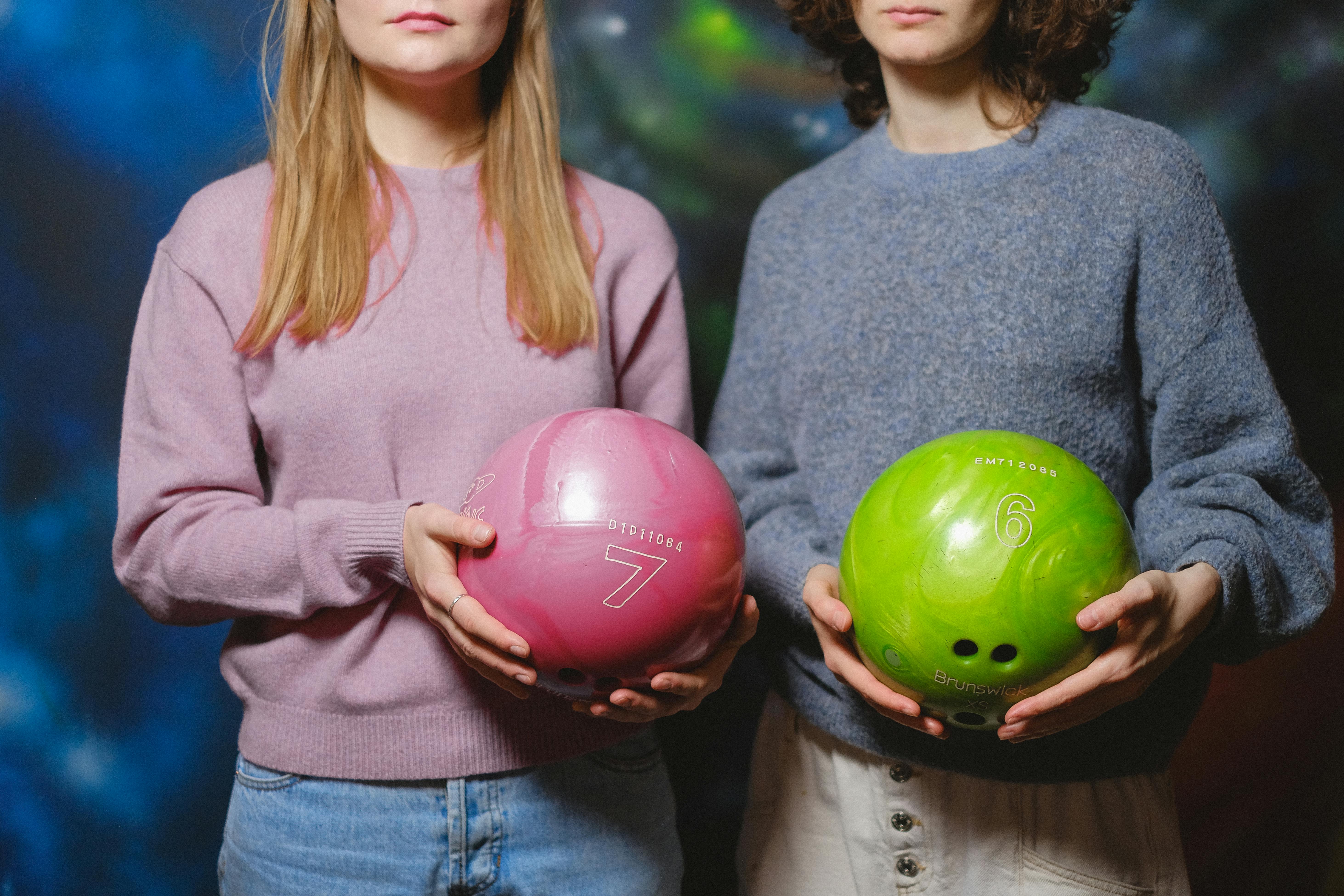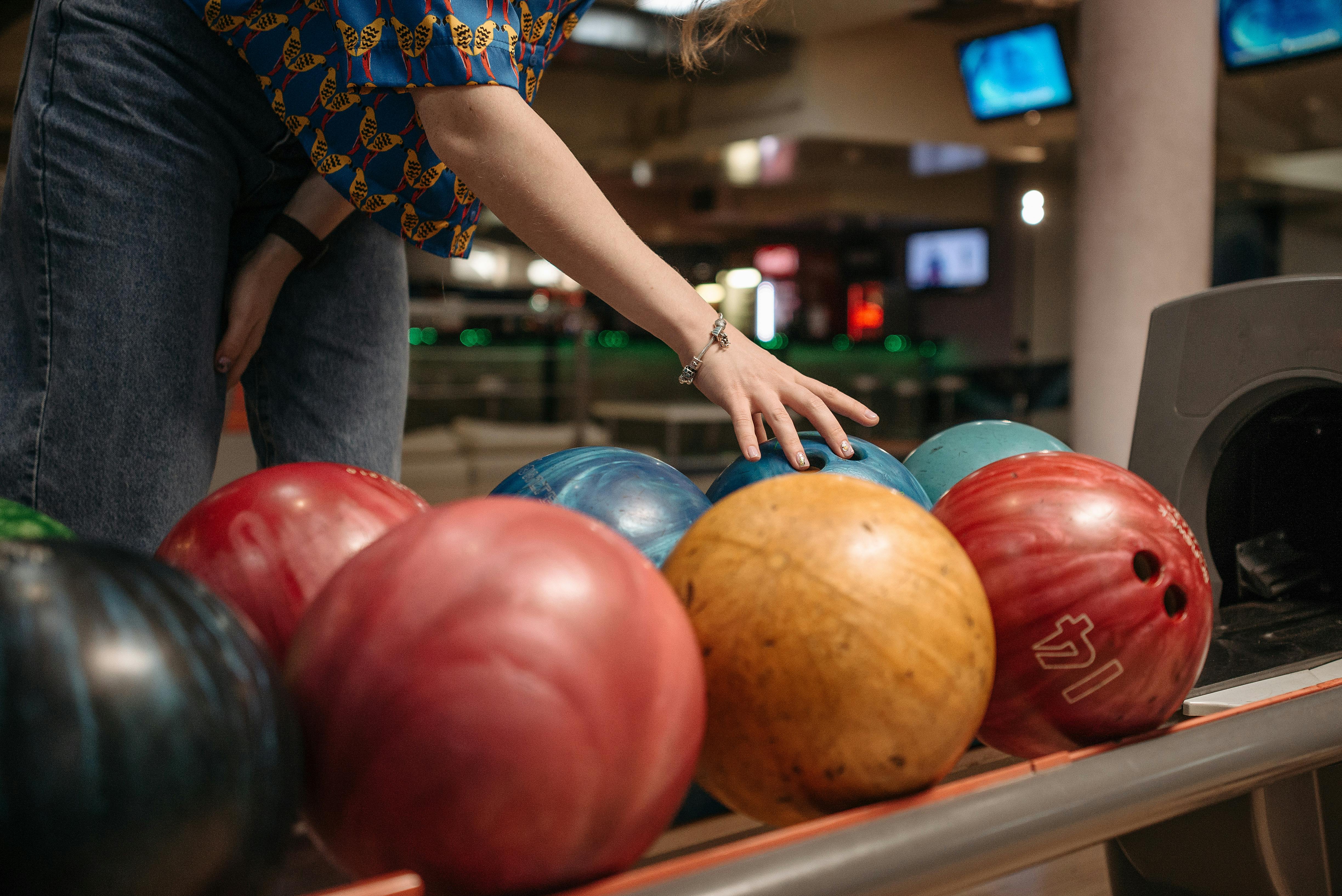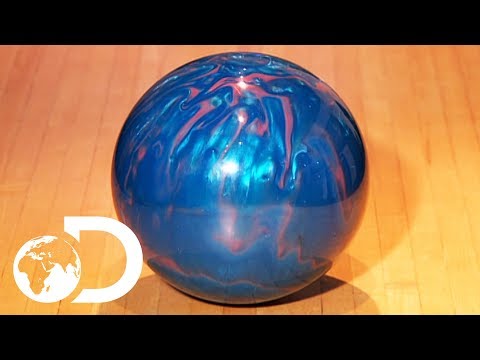Bowling balls are essential components to the game of bowling. They come in various sizes, weights, and colors, and are made of a variety of materials. The composition of a bowling ball can greatly affect its performance on the lane. Knowing what bowling balls are made of can help bowlers choose the best ball for their needs.Bowling balls are typically made from a variety of materials, including urethane, plastic, and reactive resin. Urethane bowling balls provide strong durability and consistent hook potential. Plastic bowling balls are less expensive than other types of balls and provide a good amount of control for beginners. Reactive resin bowling balls offer the most hook potential and are typically used by experienced bowlers.
What Are the Most Common Materials Used to Make Bowling Balls?
When it comes to bowling balls, there are generally two types of materials used in their construction: urethane and reactive resin. Urethane is the more traditional and common material, having been in use for many decades. It offers good durability and grip, while providing a consistent reaction on the lanes. Urethane balls usually have a hard outer shell, which helps them resist cracking and chipping. Reactive resin bowling balls are made from a synthetic material that is designed to provide more hook potential than urethane balls. The outer shell of these balls is usually softer than urethane, which allows them to absorb oil from the lane surface more easily. This increased traction allows reactive resin bowling balls to hook farther down the lane than urethane balls. Both materials offer advantages and disadvantages, so it’s important to choose the type that best suits your style of play.
In addition to these two main materials, some companies also use pearlized coverstocks on certain models of bowling ball. These coverstocks are designed to help create a stronger reaction on the lane surface and can be beneficial for bowlers who want more hook potential or extra length down the lane. The main disadvantage of pearlized coverstocks is that they tend to be less durable than urethane or reactive resin materials, so they will need to be replaced more often.
Performance and Recreational Bowling Balls
Bowling balls come in a wide variety of sizes, shapes, and materials. Knowing which type of bowling ball to use can significantly impact your performance on the lanes. Performance bowling balls are designed for competitive bowlers or those looking to increase their scores in league play. Recreational bowling balls are more appropriate for casual bowlers who are looking to have fun and improve their game.
Performance bowling balls typically have a symmetrical core design with a higher hook potential than recreational bowling balls. This allows them to generate more hook and backend reaction on the lane, making them ideal for competitive bowlers who often need this type of motion to score well. They usually have a stronger coverstock that is sanded or polished to create more friction on the lane and increase the ball’s overall hook potential.
Recreational bowling balls are designed with an asymmetrical core, which helps create less hook and more length down the lane. This makes them easier for casual bowlers to control as they don’t need as much power behind their release in order to get good results. The covers of recreational bowling balls are usually less aggressive than those used on performance models, meaning they won’t generate as much friction on the lane as performance models do.
In addition, recreational bowling balls typically come in bright colors or patterns that make them appealing to casual bowlers who want something fun and unique for their equipment. Performance models often feature traditional solid colors that give them an understated yet professional appearance that serious bowlers prefer.
Overall, performance and recreational bowling balls are designed with different types of players in mind. Performance models offer more hook potential and a professional look while recreational models offer easier control and fun designs for casual bowlers. By knowing which type of ball is best suited for your skill level, you can ensure you get the best possible results each time you hit the lanes.
Performance Bowling Balls
Performance bowling balls are designed for more experienced bowlers to maximize their game. They have a more aggressive hook potential than recreational bowling balls, allowing the bowler more control over the ball’s path. Performance bowling balls also have a higher quality coverstock, which helps them to react better to oil on the lanes and creates more friction between the ball and lane surface. This gives more control of the ball for skilled players.
Recreational Bowling Balls
Recreational bowling balls are designed for casual bowlers and beginners. They typically feature a softer core and coverstock that is less aggressive than performance bowling balls, making them easier to control and less likely to suddenly hook into the gutter. Recreational bowling balls are also usually heavier in weight than performance bowling balls, which helps novice bowlers keep their shots on track with less effort.
What Is the Core of a Bowling Ball Made Of?
The core of a bowling ball is the most important component of the entire ball. It is responsible for providing the desired reaction on the lane, and it is made up of two main components: the inner core and the outer core. The inner core is typically made of a material such as rubber or polyester, and it is designed to be as light as possible while still providing sufficient overall weight to create an appropriate reaction on the lane. The outer core generally consists of a denser material such as urethane or resin, which provides additional weight and helps to shape the overall reaction of the ball on the lane. Together, these two components work together to provide bowlers with an optimal performance on any given lane condition.

How Does a Coverstock Affect the Performance of a Bowling Ball?
Coverstock is the outer layer of a bowling ball. It is made up of various materials such as polyester, urethane, reactive resin and particle technology. Each material has its own unique characteristics which affect the performance of the bowling ball. Polyester provides a smooth, consistent roll while urethane offers more control and spin. Reactive resin is very responsive to lane conditions and provides more hook potential while particle technology offers maximum traction and angularity in the mid-lane.
The type of coverstock used on a bowling ball determines how it will react on the lane. A polyester coverstock will typically provide a straight roll with limited hook potential while urethane will offer more control and spin. Reactive resin coverstocks are highly responsive to lane conditions and provide maximum hook potential while particles offer maximum traction in the mid-lane for increased angularity.
Different types of coverstocks can also affect the overall weight distribution of a bowling ball. Reactive resin coverstocks tend to be heavier than other materials which can increase ball weight but also increase its resistance to skidding on oily lanes. On the other hand, urethane coverstocks are generally lighter which helps reduce friction between the ball and lane surface to create more length on drier lanes.
The type of coverstock used on a bowling ball can also affect its durability over time. Urethane coverstocks tend to be more durable than other materials and are less likely to crack or chip over time due to their flexibility and resistance to abrasive surfaces. Polyester coverstocks are not as durable but still provide good performance for up to 6 months before needing replacement.
Overall, it is important to choose the right type of coverstock for your bowling ball in order to maximize performance on different lane conditions. Different types of coverstocks offer different levels of hook potential, control, spin, durability, weight distribution, and length depending on your style of play or desired effect on the lane surface.
Types of Coverstocks
Bowling balls are made of a variety of materials, but the most common type is called a coverstock. Coverstocks are the outer layer of a bowling ball and can be made from urethane, plastic, or reactive resin. Urethane coverstocks are often used for straight bowling shots, while plastic and reactive resin coverstocks are used for hook shots.
Urethane coverstocks provide the least amount of hook potential but offer more control when hitting the pins. They come in a variety of colors and offer maximum durability on most lane surfaces. Plastic coverstocks have more hook potential than urethane, and they offer excellent durability on dry lane surfaces with minimal oil absorption. Reactive resin coverstocks provide more hook potential than urethane and plastic coverstocks, but they require more maintenance due to their higher oil absorption rate.
Each type of coverstock has its own advantages and disadvantages, so it’s important to choose the right one for your bowling style. Urethane coverstocks are best for straight bowlers who don’t want to worry about their ball hooking too much off the lane. Plastic coverstocks can help bowlers who need some assistance with trajectory control and can be effective on dry lanes with less oil absorption. Reactive resin is best for experienced bowlers who need more hook potential to make difficult shots easier.
No matter what type of coverstock you choose, it’s important to keep in mind that all types require proper maintenance to keep them in good shape over time. Properly caring for your bowling ball will ensure that it will last longer and perform better when you need it most!
Different Colors of Coverstocks Affect the Performance of a Bowling Ball
A bowling ball’s coverstock is often the most important factor in its performance. Coverstocks are made from different materials, and they come in a variety of colors. The color of the coverstock affects the ball’s reaction on the lane, as well as its overall performance. Different colors can create different effects on the lane, so it’s important to choose the right one for your style of play.
One type of coverstock is urethane. Urethane will give you a longer and smoother roll on the lane, making it great for slower speeds and straight shots. It also offers more control when bowling, allowing you to adjust your line better and keep your ball on track. Urethane is available in a range of colors, including black, red, blue, green, and purple.
Another type is reactive resin. Reactive resin coverstocks are designed for more aggressive hook potential than urethane balls. They are usually more durable than urethane balls as well. The colors available in reactive resin include orange, yellow, pink, and silver.
Finally, hybrid coverstocks combine both urethane and reactive resin components to create a unique combination with optimal hook potential and control. Hybrid balls are typically more expensive than either urethane or reactive resin models but offer greater versatility when used properly. Hybrid balls come in various colors such as pink/blue/purple blends or black/red/silver blends for added visual appeal.
In conclusion, different colors of coverstocks can affect the performance of a bowling ball significantly depending on your style of play and desired reaction on the lane. Choosing the right color can make a huge difference in your game so make sure to do your research before buying!

Conclusion
Bowling balls are an important part of the game of bowling. They come in a variety of sizes and materials, from rubber and plastic to urethane and resin. Many major bowling ball manufacturers use a combination of materials to create the best possible bowling ball for each situation. The core of the ball is typically made from either a plastic or rubber material, while the coverstock is made from a variety of different synthetic materials. Each material provides a unique level of performance for the bowler, depending on their skill level and type of lane they are playing on.
So while there is no one-size-fits-all answer to what bowling balls are made out of, understanding the various materials used will help bowlers choose the best ball for their style and skill level. Whether you’re just starting out or already an experienced bowler, having the right equipment can make all the difference when it comes to improving your game.

